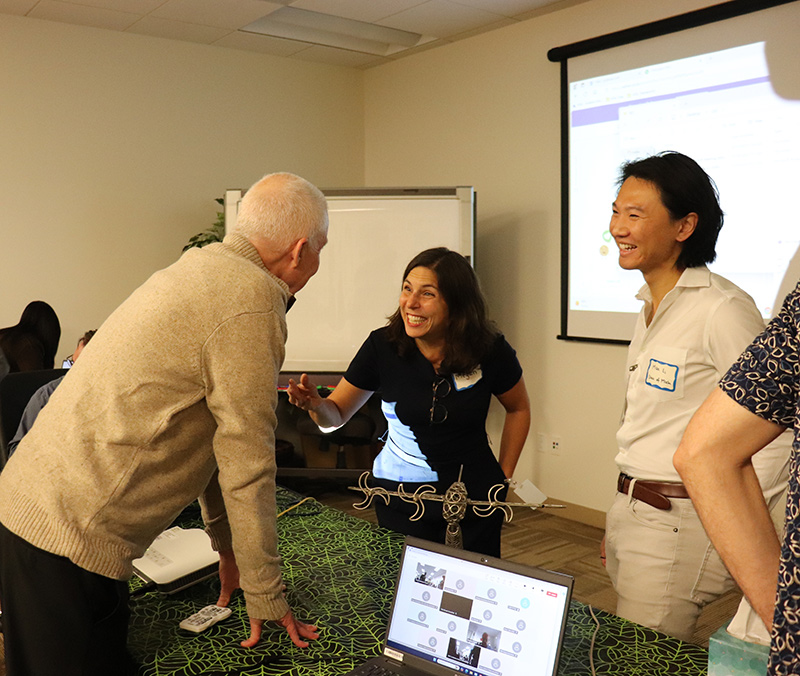
How Aerospace Researchers are Working to Ensure Your Future Holiday Travel Plans Go Undisrupted
Professor Max Li collaborates on $6 M NASA University Leadership Initiative

Professor Max Li collaborates on $6 M NASA University Leadership Initiative

As air travel continues to skyrocket nationwide – and as the holidays quickly approach – airlines around the world are anticipating passenger travel numbers are hitting record setting highs. This holiday season, the FAA projected that more than 50,000 flights operated on December 19, 2024, making this day the busiest yet of the holiday season for air travel. With the increase in air travel around the holidays, researchers are also predicting more airline delays from disruptive events, such as extreme weather conditions, infrastructure outages and more.
Michigan Aerospace Assistant Professor Max Li has been collaborating with industry leaders and universities around the country on a NASA University Leadership Initiative (ULI) to strengthen the resilience of the US National Airspace System (NAS) in an effort to reduce delays in air travel. The $6 M Center for Air Transportation Resilience (CATRes) had its official kick-off meeting in October 2024, and is setting its sights on reducing the disruptive impact of major storms, facility outages and other shocks.
According to the U.S. Department of Transportation Bureau of Transportation Statistics, year-to-date (January 2024 through end of September 2024), the on-time performance of U.S. airlines was at approximately 76% (e.g., 76% of flights were on time). The performance metric is critically important, as delayed flights can cost airlines billions of dollars in additional expenses. For 2019, the FAA estimated the annual cost of delays (direct cost to airlines, passengers, lost demand and indirect cost) to be $33 billion USD.
With researchers from six other participating universities, Professor Li has been awarded $870k for the University of Michigan and for his research group, the Laboratory for Air Transportation, Infrastructure, and Connected Environments (LATTICE). Students within the lab also attended the kick-off meeting and will be working closely with Li and other collaborators to reach the goals set out by CATRes.

“Within the first year, CATRes is going to work closely with airlines and airports to jointly develop a database of past aviation disruptions that can be studied and evaluate tools such as flight schedule optimization that can help the air traffic network recover from disruptions like bad weather,” explained Professor Li. “We are also establishing research frameworks that center around the passengers instead of arbitrary performance metrics when evaluating air traffic disruptions.”
Within the LATTICE lab, three U-M students are assisting Li with the project. Master’s student in Industrial and Operations Engineering (IOE), Sinan Abdulhak, will look at how to use large language models (LLMs) to realistically simulate disruptions as well as the accompanying response to the disruption. Meanwhile, second-year PhD student in Aerospace Engineering, Haochen Wu, will be working on distributionally robust optimization of models that can help decision makers strategize under uncertain conditions that will reduce delays and costs by training a model using historical data and weather information. Finally, first-year PhD student in Aerospace Engineering, Micah Borrero, will explore the use of multi-modal options, like airside buses instead of regional flights, to reduce costs, ease airspace congestion and ultimately improve resilience in the NAS during disruptions.
“One really amazing thing about this project is that it’s not just academics; we’re working with the folks who are actually involved in the decision making, the day to day management of aircraft, folks from the FAA and from the port authorities of different regions across the country. These are the people that can actually do something with our research which I think makes it really exciting and makes the insights we gain, especially from the user perspective, really valuable,” explained Abdulhak.
In addition to the research from this initiative, the team is also looking to provide the next generation of students a chance to shape the aviation infrastructure. The work done here will include an education and workforce development program covering K-12, undergraduate, and graduate students.
Additional universities, colleges and organizations involved in this effort alongside, Professor Li include: University of California Berkeley, University of Maryland, Morgan State University, University of Pennsylvania, Elizabeth City State University, United Airlines, Port Authority NY NJ, Project Gestalt Aviation Advisors, ATAC Corporation, Mead and Hunt, American Airlines, Jet Blue, Vaughan College of Aeronautics and Technology, The Federal Aviation Administration (FAA), Lansing Community College, Community College of Philadelphia, and City College of San Francisco.